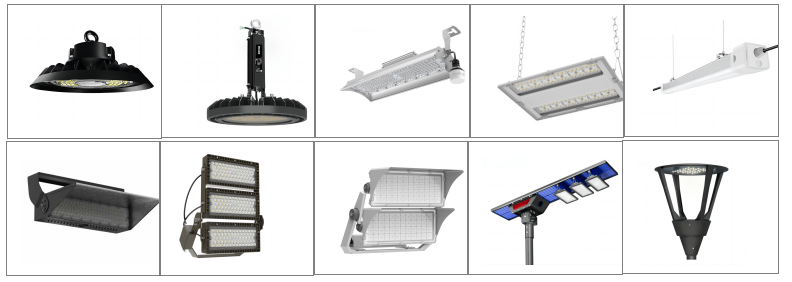Heat Dissipation/Thermal Management
A common misconception when considering fixture life is only accounting for the LED components. More often than not, the point of failure in an LED luminaire is the driver, and system construction along with ambient temperature figure heavily into driver lifetime.
LED luminaires operate much cooler than traditional lighting, but managing heat remains a major factor in maximizing lifetime. To ensure long life, LED luminaires should be constructed with robust and durable heat sinks that allow effective heat transfer from the LEDs to the ambient environment. Heat sinking, often designed as fins, allows for adequate air flow and increases the surface area for heat dissipation.
Effective thermal management will extend luminaire life, lower both lumen depreciation and color shift of the LEDs over time. DECENTEK industrial LED fixtures are designed with high quality, die cast aluminum housings that provide an optimal thermal path to the heat sink assembly.
• Robust heat fins
• Ensures proper air flow
• Facilitates dust shedding
We also isolate the driver from the primary heat source (LED engine) in most of our LED luminaires.
• Helps improve heat dissipation
• Helps reduce junction temperature

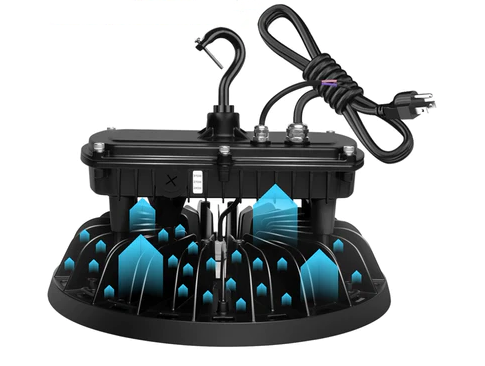
Driver Design & Field Replaceability
Drivers are used to power a luminaire’s LEDs by stepping down the incoming voltage and converting it from AC to DC. They also protect the LEDs from fluctuations in current and voltage. Drivers are a critical component in the overall efficiency and longevity of a lighting fixture.
• Power Factor PF >0.95: Higher utilization ratio of the power grid and less losses
• Conversion Efficiency η >0.9(Isolated driver): Lower power consumption by the driver itself makes the LED fixtures more energy-efficient
• THD <15%: Minimize electromagnetic interferences with equipment/machinery
• Multiple Protections: Short-circuit, Over-voltage, Over-current, Over-temperature
• Built-in Lightning Protection(Optional): 6kV, 10kV
• Flicker Index - Meet with flicker free standard IEEE Std 1789-2015
• Drivers are separated from the LED subassembly, allowing for tool-free or easy replacement in the field

Lens/Cover
A luminaire’s lens is another important factor in the overall quality and safety of an industrial lighting installation. While a clear glass lens is most common, it may not always the best option for every application or market. A clear lens could result in unwanted and dangerous glare, depending on the luminaire’s mounting height. Glass may not perform well in areas prone to impact or shock. And some specific industries, such as food & beverage, have additional safety requirements to take into consideration.
DECENTEK LED fixtures are available in a variety of lens materials and to meet customer requirements or preferences. Read below to learn more about each option.
| Lens Materials | Lens Finishes |
|
Glass:
• Reliable in both high and low temperatures
• Better resistance to chemicals &
cleaning solvents
• Durable, but will shatter if broken
Polycarbonate: |
Clear:
• Excellent optical performance
• Maximizes light output
• Glare and light intensity maybe an issue
Diffused:
• Eliminates glare in low mounting height applications
• Aesthetically pleasing
• Reduces overall lumen output and efficiency
|
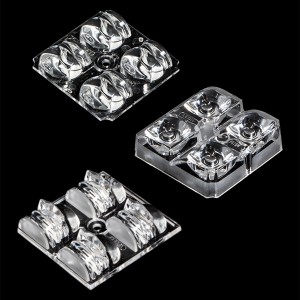
Protection Against Water & Dust Ingress
Lighting installations in industrial areas commonly encounter windblown dust, rain, splashing water, and even hose-directed water during washdowns. It’s critical that the luminaires you select be designed and certified to keep water, dust and debris from entering the housing or lens and causing costly damage. A luminaire’s gaskets play a key role here.
| Type |
Fixture Application |
IP Equivalent |
|
NEMA 3
|
Outdoor – rain, sleet, windblown dust, external formation of ice
|
IP54 |
|
NEMA 4
|
Indoor/outdoor – windblown dust and rain, splashing water, hose directed water,
external formation of ice
|
IP66 |
|
NEMA 4X
|
Indoor/outdoor – windblown dust and rain, splashing water, hose directed water,
external formation of ice, corrosion
|
IP66 |
|
NEMA 12
|
Indoor – circulating dusts, falling dirt, dripping oil, non-corrosive liquids
|
IP52 |
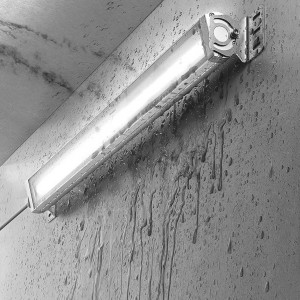
Vibration and Impact Resistance
Exposure to constant vibration, or unintentional impact or shock, could lead to premature failure if a luminaire is not properly designed and tested for these scenarios.
At a minimum, light fixtures for use in harsh and hazardous areas should be tested and certified to UL 844, which includes a 35-hour vibration test at 2,000 cycles per minute.
If you are choosing a fixture which will be fitted within a high traffic area such as street, highway or other commercial environments, then it’s important to choose a fixture with an appropriate IK rating. If a fixture was to become damaged, it could result in the fixture failing to work efficiently, or worse still, failing completely. Analyzing the risk of impact is the first step in deciding if you need a fixture with a high IK rating. It’s not just high traffic areas which need IK rated fixtures, but if the area is prone to vandalism it’s a good idea too.
For areas of low risk an IK rating of IK07 and below is ideal. IK08 is great for areas which provide a reasonable risk of impact, whereas for maximum protection in places such as parks, schools, prisons and subways IK10 is essential.

Reliability in Extreme Ambient Temperatures
The ambient temperature of your application is another important factor to consider when selecting luminaires for industrial or outdoor areas. Extreme high or low temperatures can heavily impact the lifetime of a light fixture if it is not properly designed and tested for such conditions.
Verify that the luminaire’s certified operating temperature range aligns with the maximum or minimum ambient temperature experienced in your application.
Our portfolio of industrial LED luminaires is tested and certified for use in both high and low ambient temperatures. Some of our LED families are rated to +75ºC for extreme heat applications. So no matter where your lighting application is located, we have an LED solution that will perform safely and reliably for years.
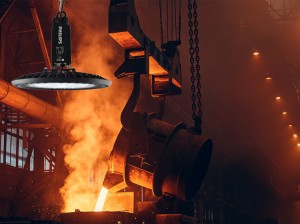
Temperature Ratings
When designing or specifying luminaires for hazardous areas, you must take into consideration the ignitable properties of the specific explosive hazard that will be present. The operating temperature of the luminaire must not exceed the ignition temperature of the gas, vapor, or dust encountered.
The National Electrical Code requires that all heat producing equipment used in classified areas be marked to indicate its operating temperature or temperature range during use, identifi ed by a “T-rating number".
Products often have T-ratings for multiple ambient temperatures, as well as for the “simultaneous presence” of different hazards. If the T-rating for your selected light fixture (at the applicable ambient temperature) is lower than the ignition temperature of the identified hazard, then the fixture is thermally suitable for that classified area.
|
Maximum Temperature
|
Temperature Class (T-code) | ||
| ºC | ºF | Division | Zone |
| 450 | 842 | T1 | T1 |
| 300 | 572 | T2 | T2 |
| 280 | 536 | T2A | |
| 260 | 500 | T2B | |
| 230 | 446 | T2C | |
| 215 | 419 | T2D | |
| 200 | 392 | T3 | T3 |
| 180 | 356 | T3A | |
| 165 | 329 | T3B | |
| 160 | 320 | T3C | |
| 135 | 275 | T4 | T4 |
| 120 | 248 | T4A | |
| 100 | 212 | T5 | T5 |
| 85 | 185 | T6 | T6 |
Corrosion Resistance
Corrosion control can mean the difference between a trouble-free lighting installation and costly equipment failure. While corrosion in industrial environments is inevitable, all DECENTEK LED fixtures are manufactured using materials and finishes that provide efficient combination of strength and resistance to corrosive agents like water, acids, alkalies, salts and gases.
Our 10+ years of experience in corrosion control can help you reduce costly repairs and safety issues due to loss of light.
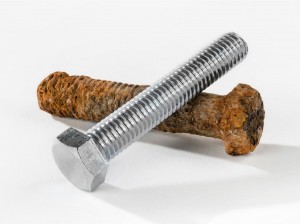
Surge Suppression
Lightning strikes and current surges pose a costly threat to facility lighting systems. To protect against this, we have the LED fixtures with built-in 4kV, 6kV and 10kV surge suppression, and also 10kV and 20kV SPD as optional accessories,

